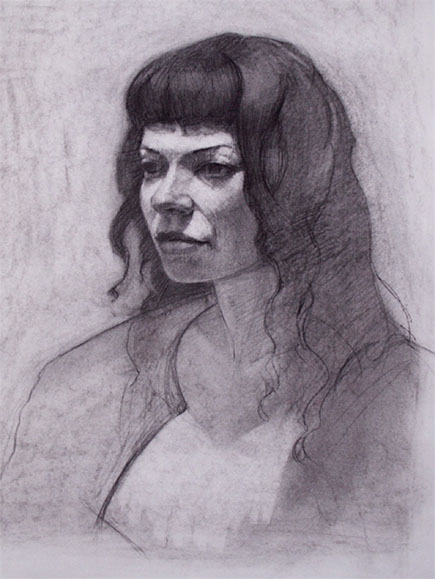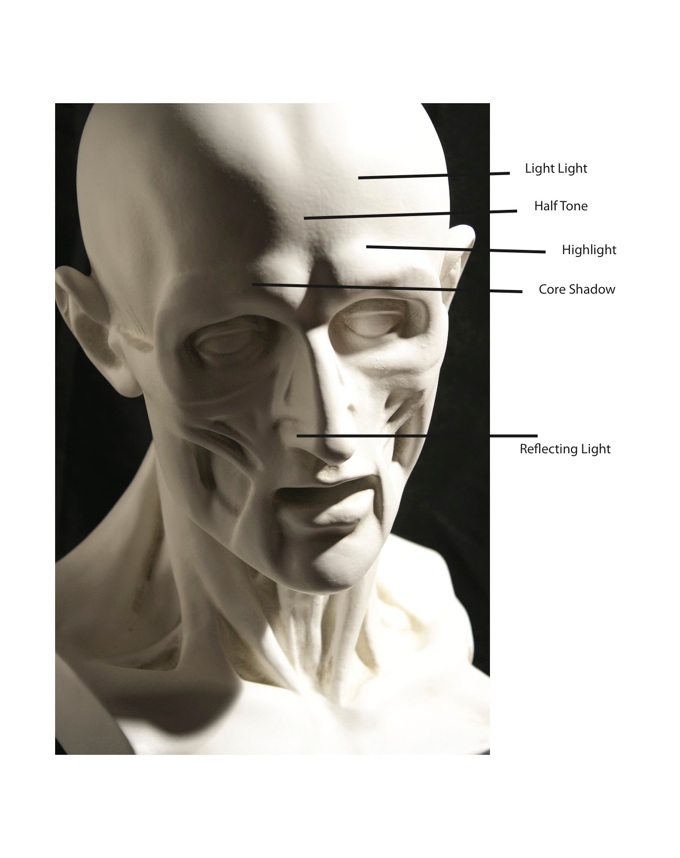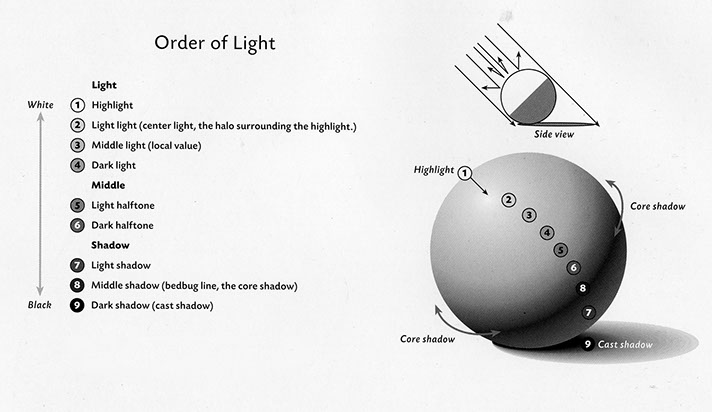Value- the relative degree of lightness and darkness
Begin by breaking down what you are drawing by focusing on the biggest bulk shapes first, the light mass and the shadow mass. Do not get the reflecting light confused with the light mass. It is still part of the larger shadow mass, even though it is a lighter part of the shadow. Do not make the areas of half tones, also called middle values, darker than any of the area of the shadow mass.
Remember: The lightest light in the shadow mass is always darker than the darkest dark in the light mass.
The only exception to this would be when the actual object or person you are drawing has an area that is naturally dark, such as Aja’s dark hair in the drawing. Obviously it is darker than some areas of the shadow. When drawing you must think how much darker and are there areas of the dark hair that are darker than others? Always compare one area to another. For example you would ask yourself how dark is the bottom of the nose compared to the area directly under the nose? How dark is the hair compared to the shadow of the side of the face? How dark is the side of the nose compared to the front plane of the face? Where are the darkest darks and the lightest lights? Sometimes these changes in value from one place to another are very subtle and other times they are more extreme. The key is making sure you pay attention to this and adjust the values in your drawing accordingly, based on what you are seeing.


